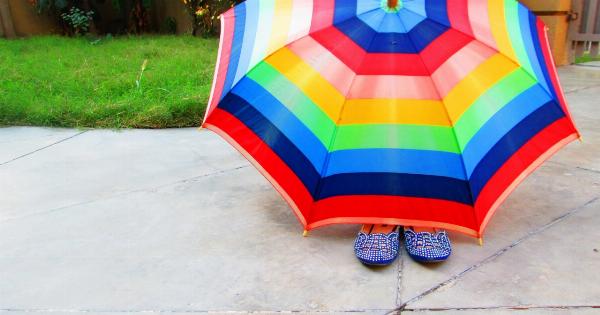During summer, people spend more time basking under the sun. However, overexposure to the sun’s rays can lead to sunburns or sun poisoning, which most people use interchangeably, without knowing the differences between the two.
While both conditions leave your skin red, irritated, and painful, they result from exposure to the sun’s rays but describe distinct types of skin reactions.
What Is Sunburn?
Sunburn is a condition where your skin turns red, feels hot and irritated due to overexposure to the UV radiation from the sun or other sources like tanning beds.
Sunburn typically occurs within a few hours of being exposed to the sun, but the redness may not be apparent until about a day later. Sunburn penetrates the outermost layer of your skin (epidermis) and the second layer of skin (dermis) when more severe.
Exposed areas are most vulnerable, like your face, neck, scalp, arms, and legs. Sunburn symptoms can range from mild to severe, depending on the individual’s skin type, part or whole-body exposure, and the intensity of UV rays.
Sunburn can cause itching, peeling, swelling, headaches, fever, and nausea. These symptoms typically resolve in a few days to two weeks with proper care.
What Is Sun Poisoning?
Sun poisoning, also known as photodermatitis, is an extreme skin reaction to sun exposure that often causes symptoms similar to an allergic reaction. This condition is not caused by poison and can affect people of all ages, skin types, and colors.
It usually occurs when you’ve been exposed to the sun for an extended period, and your immune system reacts to the UVB radiation in the sun’s rays.
Sun poisoning symptoms include blisters, hives, rashes, itching, swelling, chills, fever, and nausea. In general, your skin is more sensitive when it comes to sun poisoning, which triggers a reaction that results in an internal irritation.
Your skin may not be red and hot as sunburn, but it may appear bumpy with a blister-like texture. The usual timeframe for sun poisoning to appear is within 24 hours after skin exposure to the sun’s rays, and it can take several days to weeks to heal.
The Main Differences Between Sun Poisoning vs. Sunburn
Knowing the differences between sun poisoning and sunburn will help you understand the subtle nuances between these conditions. Here are a few of the primary differences:.
Cause
Sunburn is caused by overexposure to UV radiation from the sun or other sources like tanning beds.
However, sun poisoning occurs when your immune system reacts to UV radiation or toxic agents, or medications in the sun’s rays or sunlight-triggered chemicals found in some lotions, perfumes, and soaps.
Symptoms
Sunburn symptoms include redness, inflammation, peeling, blistering, and itchiness. Sun poisoning symptoms include blisters, hives, rashes, itching, swelling, chills, fever, and nausea.
Timeline
Sunburn symptoms typically develop within a few hours of sun exposure, but sun poisoning may appear within 24 hours after exposure to the sun’s rays and can take several days to resolve.
Severity
While both sun poisoning and sunburn can cause severe discomfort, sun poisoning is often more severe and can cause a fever, nausea, and chills.
How to Treat Sunburn vs. Sun Poisoning?
Understanding how to treat sunburn vs. sun poisoning is key to quick and effective relief. Here’s what you can do:.
Sunburn Treatment
If you have sunburn, you can take the following steps for relief:.
- Get out of the sun and indoors for a quick relief
- Stay hydrated to help your skin heal
- Take pain relievers like aspirin or ibuprofen for the pain
- Cool the affected skin with a cool bath, or use a cold compress
- Apply aloe vera or other cortisone creams to soothe the skin and help it heal faster
- Wear loose, cotton clothing to avoid irritating your skin further
Sun Poisoning Treatment
If you have sun poisoning, follow the same steps as for sunburn, but with a few additional modifications:.
- Avoid scratching or picking off blisters or hives
- Stay away from further exposure to the sun’s rays
- Use calamine lotion to reduce itching and swelling
- Take an over-the-counter antihistamine for relief from itching and swelling
- See a doctor if your symptoms are severe or persist for several days or weeks
How to Prevent Sun Poisoning and Sunburn?
The best way to avoid sun poisoning and sunburn is to take measures to avoid overexposure to UV radiation. Here are a few tips:.
- Stay indoors during peak sunlight hours (10 a.m. to 4 p.m.)
- Wear protective clothing like a wide-brimmed hat, sunglasses, and long-sleeved shirts and pants to cover exposed skin
- Use sunscreen with at least SPF 15 that blocks both UVA and UVB rays, and reapply every two hours or after swimming or sweating
- Stay hydrated by drinking plenty of fluids and avoid alcohol or caffeine that can dehydrate you quicker
- Don’t use tanning beds, as they emit UVA and UVB radiation, which can cause sunburn and increase your risk of skin cancer
Conclusion
Sunburn and sun poisoning are painful and uncomfortable skin conditions that occur due to UV radiation from sun exposure.
Both conditions result in red, irritated skin, but sun poisoning is usually more severe and can cause additional symptoms like hives, blisters, and fever. Knowing the differences between sun poisoning and sunburn will help you identify each condition, seek treatment, and take measures to protect your skin from future UV exposure.




























